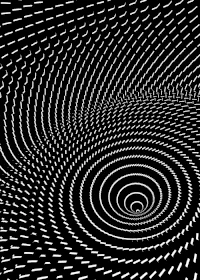Wormholes: Portals Through the Fabric of Space-Time

Wormholes, those elusive gateways that defy our conventional understanding of the universe, represent one of the most intriguing and mind-expanding concepts in modern physics and metaphysical exploration. Often described as shortcuts through the fabric of space-time, wormholes offer a tantalizing glimpse into the possibilities of interstellar travel, cosmic connections, and the very nature of reality itself.
The Cosmic Passageways
Wormholes are theoretical constructs that suggest the existence of pathways connecting distant points in space-time, allowing for rapid travel across vast cosmic distances. These cosmic passageways challenge our understanding of the universe and ignite our imagination with the possibilities of exploration and discovery.
-
Theoretical Foundations: The concept of wormholes arises from the equations of general relativity, first proposed by Albert Einstein and Nathan Rosen in the 1930s. Known as Einstein-Rosen bridges, these theoretical structures are envisioned as tunnels or bridges that link separate regions of space-time. Though purely theoretical, they offer a framework for understanding how such cosmic shortcuts might exist.
-
Interstellar Travel: One of the most captivating implications of wormholes is their potential to revolutionize interstellar travel. If traversable wormholes could be stabilized and navigated, they would provide a means of instantaneously crossing the vast distances between stars and galaxies. This concept fuels dreams of cosmic exploration and the possibility of encountering distant civilizations.
-
Dimensional Portals: Beyond mere travel, wormholes are also imagined as portals to other dimensions or parallel universes. The idea that wormholes could serve as gateways to alternate realities or realms beyond our own invites profound questions about the nature of existence and the multiverse.
The Mysteries and Challenges of Wormholes
The study of wormholes brings with it a host of mysteries and challenges, both scientific and metaphysical. Exploring these enigmatic structures requires us to push the boundaries of our understanding and embrace the profound implications of their existence.
-
Stabilizing Wormholes: One of the significant challenges in the study of wormholes is the need to stabilize them for practical use. Theoretical models suggest that exotic matter with negative energy density might be required to keep a wormhole open and prevent it from collapsing. The search for such exotic matter and the feasibility of creating stable wormholes remain key areas of research.
-
Navigational Dilemmas: Even if stable wormholes could be created, navigating them presents its own set of challenges. The nature of wormholes and their potential effects on space-time could make travel through them unpredictable and fraught with uncertainties. Understanding and overcoming these navigational dilemmas is essential for harnessing the potential of wormholes.
-
Cosmic and Metaphysical Implications: The existence of wormholes raises profound questions about the nature of the universe and our place within it. They invite us to reconsider our perceptions of space and time, and to explore the potential connections between different realms of existence. Wormholes symbolize the boundaries of human knowledge and the mysteries that lie beyond.
Exploring the Cosmic Gateway
Engaging with the concept of wormholes encourages us to expand our cosmic horizons and embrace the mysteries of the universe. The idea of these cosmic gateways invites us to explore the boundaries of our understanding and to connect with the deeper dimensions of existence.
-
Embracing Cosmic Curiosity: The study of wormholes inspires a sense of cosmic curiosity and wonder. It challenges us to question our assumptions about the nature of space and time, and to seek out new knowledge and insights about the universe.
-
Connecting with the Infinite: Wormholes symbolize the infinite possibilities of the cosmos and our potential to explore and connect with distant realms. They remind us of the boundless nature of existence and the potential for discovery that lies beyond our current understanding.
-
Fostering Exploration and Discovery: The allure of wormholes drives us to continue exploring and pushing the boundaries of our knowledge. It motivates us to seek out new frontiers and to uncover the hidden dimensions of reality, inspired by the promise of cosmic exploration and discovery.
Embracing the Wonders of Omnithreads
At Omnithreads, we celebrate the profound mysteries of wormholes through our spiritually infused designs. Each piece of clothing is crafted to resonate with the enigmatic energy of these cosmic gateways, embodying the wonder and exploration of the universe.
Join us in embracing the mysteries of wormholes. Let our designs inspire you to connect with the deeper dimensions of existence, explore the possibilities of cosmic travel, and celebrate the boundless nature of the universe. Through our creations, we invite you to honor the profound secrets of wormholes and the timeless mysteries they represent.
















Leave a comment